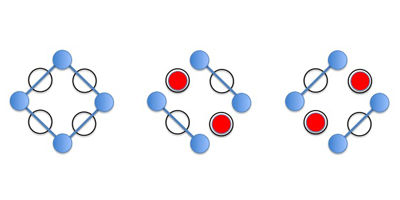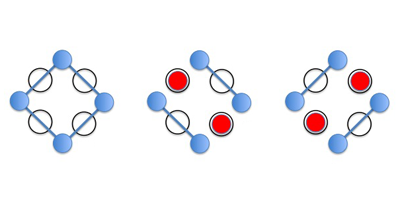Measuring Many-Body Entanglement
Spooky action at a distance, as Einstein called quantum entanglement, is often pictured as something that happens among a small number of participants, with cartoons showing two particles flying apart but still eerily correlated. However, entanglement also plays a crucial role in many-body quantum systems, where it is characterized by a quantity called entanglement entropy. Although the entanglement entropy has been a vitally important theoretical concept in studies of complex quantum systems, actually measuring it has seemed dauntingly difficult, if not outright impossible. Now, two papers appearing in Physical Review Letters, one from Dmitry Abanin and Eugene Demler at Harvard University and the other from Andrew Daley at the University of Pittsburgh, Pennsylvania, and colleagues, propose different ways of carrying out such an experiment.
Abanin and Demler envision a single qubit (a two-level entity they call a quantum switch) coupled to a composite system that comprises several identical copies of the quantum many-body system that one wants to measure. This switch controls how the different subsets of the entire system interact, and the authors show theoretically that the entanglement entropy can be determined by watching how the populations of the energy levels in the switch change. They also suggest a practical implementation making use of ultracold atoms to test their ideas.
Daley et al. tackle the problem by asking how one might track the changes in entanglement in a nonequilibrium many-body system. Their proposal involves an optical lattice created by lasers and filled with bosons: identical copies of a boson chain stored in the lattice are coupled as a potential barrier between them is reduced. After tunneling has occurred, a measurement of how the lattice wells are populated would give the entanglement entropy. The authors give an example of a system changing from a Mott insulator to a superfluid-like state where quantum entanglement rapidly grows among the particles.
If one or both of these recipes can be cooked up in the lab, the measurement of entanglement entropy of many particles will be a big step toward the quantitative evaluation of how quantum building blocks might be scaled up to useful quantum computers or simulators of quantum physics on classical computers. – David Voss





